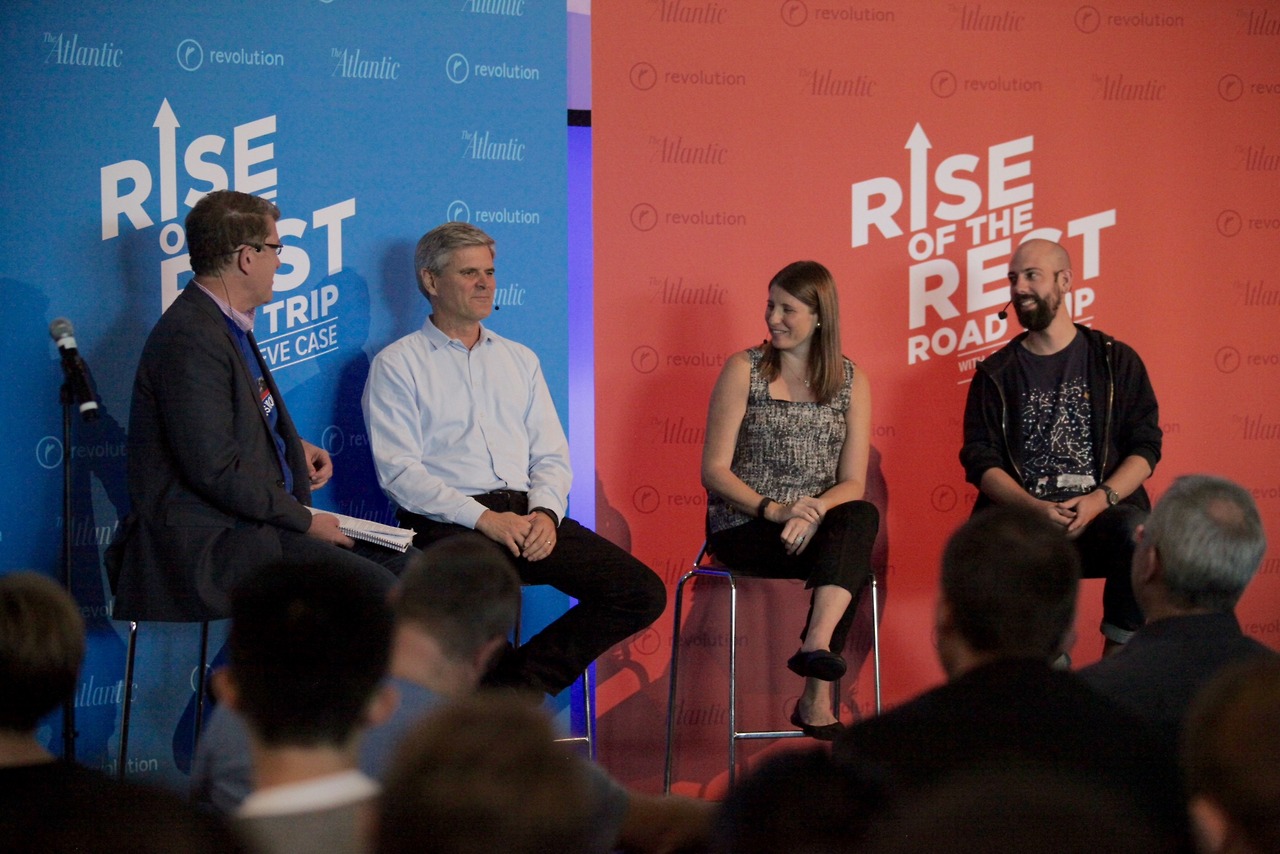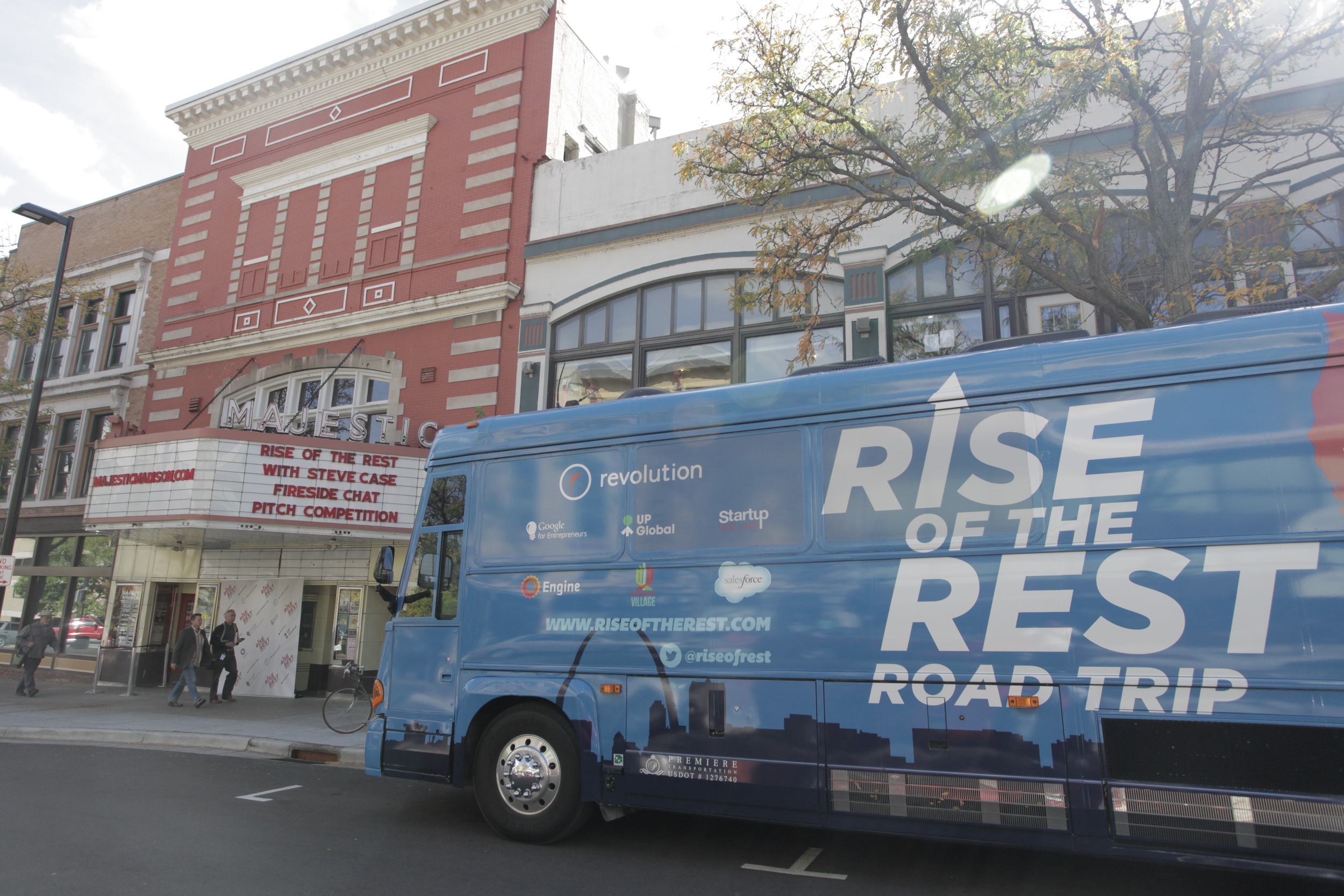One of the core promises of the 2012 JOBS Act is that it would open the doors for investment to many more Americans, and—in turn—many more worthy startups. Currently, only a so-called “accredited investor” can make investments in startups, which means that only individuals making $200,000 in annual income over the past two years or with over $1 million in assets, excluding their home, qualify to take part in investing in the startup community. This high threshold unfortunately guarantees that average Americans cannot take advantage of investment opportunity and, in turns, limits the money that makes its way to growing companies.
The JOBS Act intended to change this, but as the new lively podcast, Startup, explains, the JOBS Act has been “stuck” at the SEC for over a year now. The SEC simply hasn’t issued the rules it’s required to under the law that would make this kind of investment—what’s been called equity crowdfunding—widely accessible. This is why we’re urging the SEC to finish the job Congress set out for them when it passed the JOBS Act in 2012 and allow supporters of great ideas to invest in ventures they care about, regardless of income level.
Take for instance Nadia, one of the podcast Startup’s listeners. As explained more fully in the episode, Nadia reaches out to the podcast producers and offers to invest in their new podcasting startup company (more on that below). It’s only then that the company’s founders realize that, as ridiculous as it sounds, they actually can’t take Nadia’s money.
If you haven’t listed to Startup, a new podcast from former Planet Money and This American Life reporter Alex Blumberg, then find time in your day to check out Startup. The “public radio journalist turned entrepreneur” Blumberg’s newest venture is a podcast network called Gimlet Media, a startup based on the idea that there’s a massive market opportunity in well-produced, journalistic storytelling via podcasts. And fittingly so, Blumberg’s producing a podcast, called Startup, on the efforts behind building this new company. In each episode, he documents the challenges familiar to many entrepreneurs—like raising money. You should listen to the whole series.
In the most recent episode, where we meet Nadia, Blumberg explores financing this new venture utilizing avenues provided by the 2012 JOBS Act.
As Blumberg explains, before the JOBS Act was passed in 2012, the SEC prohibited private companies from publicly soliciting investment. Businesses of any size seeking funding needed to have an established, pre-existing relationship with a defined accredited investor in order to raise money from them, or as Blumberg succinctly concludes, “Only rich insiders could invest in these companies.”
In an age of social media, near seamless access to information, and well, podcasts, this rule was clearly outdated. And on September 23, 2013, the SEC lifted the ban on general solicitation, making the primary intent of Title II of the JOBS Act effective. (Title I of the law addresses how startups pursue IPOs and went into effect immediately after the bill’s passage.)
The law now allows for the mass marketing—posting on social media, a crowdfunding website, or in a podcast—of these more common security offerings. Consequently, Blumberg invites listeners over the air to invest in Gimlet Media: “If you share in our vision, and you want to share in our business,” he asks you to check out their crowdfunding portal to invest. But here’s the thing: even still, you have to fit under the limiting definition of an accredited investor.
So while the JOBS Act originally set out to change the accredited investor requirement and make investing a possibility for a wider range and income level of Americans, this hasn’t yet happened. Experts have proposed rules based on experience or investor education as alternatives, yet there’s been no sign of progress at the SEC. “Today, to become an investor through one of those public solicitations, you need to be the exact same rich person you were before the JOBS Act was passed,” says Blumberg.
Blumberg’s business, Gimlet Media was able to raise $200,000 from accredited investors in the seedround announced on the podcast. Nonetheless, “there are still a lot of regular people who are not allowed by law to invest in our company,” says Blumberg, and for that matter, hundreds of other exciting ventures around the country.
We’re telling the SEC it’s time they issue JOBS Act rules and fulfill the promise of what Congress set out to do when it passed the bill two years ago: booster the startup economy and spur participation from a wider range of Americans. Sign and share our letter at engine.is/jobsact.





















 What became obvious to us during our visit to this accomplished city is that there’s still immense potential for growth in the concentration and network of startups here. There’s room for the startup community to encourage more collaboration, garner more support and become more recognized in this city where the Fortune 500 companies remain the dominant economic influence. Steve Case and the Rise of the Rest team shared ideas about how to enliven this startup ecosystem, including encouraging big businesses to become customers of smaller ones, creating opportunities for mentorship, and sponsoring more initiatives like the Minnesota Cup, an annual competition that rewards new business ideas. Considering how things are going, we look forward to seeing what the entrepreneurs of the Twin Cities do next.
What became obvious to us during our visit to this accomplished city is that there’s still immense potential for growth in the concentration and network of startups here. There’s room for the startup community to encourage more collaboration, garner more support and become more recognized in this city where the Fortune 500 companies remain the dominant economic influence. Steve Case and the Rise of the Rest team shared ideas about how to enliven this startup ecosystem, including encouraging big businesses to become customers of smaller ones, creating opportunities for mentorship, and sponsoring more initiatives like the Minnesota Cup, an annual competition that rewards new business ideas. Considering how things are going, we look forward to seeing what the entrepreneurs of the Twin Cities do next.


